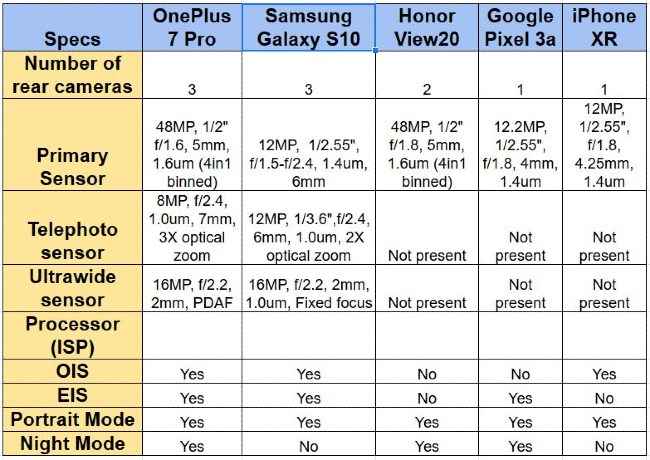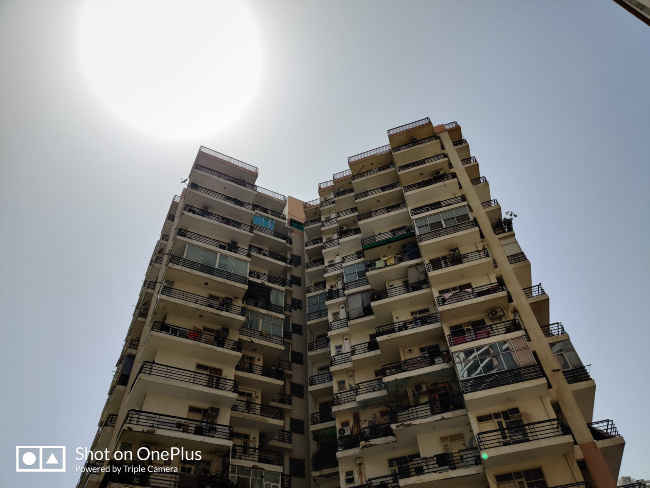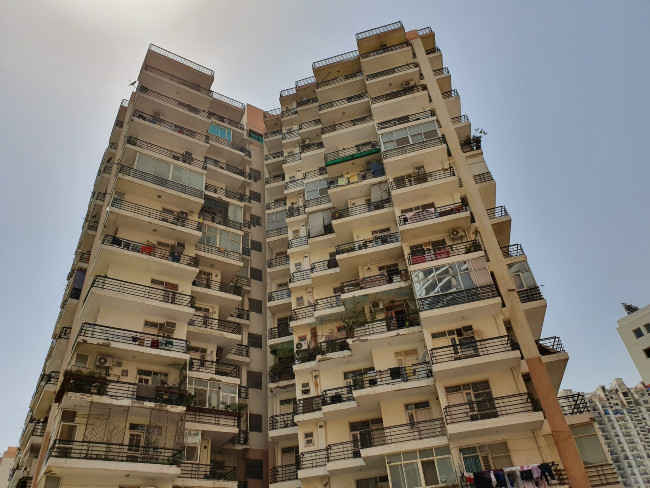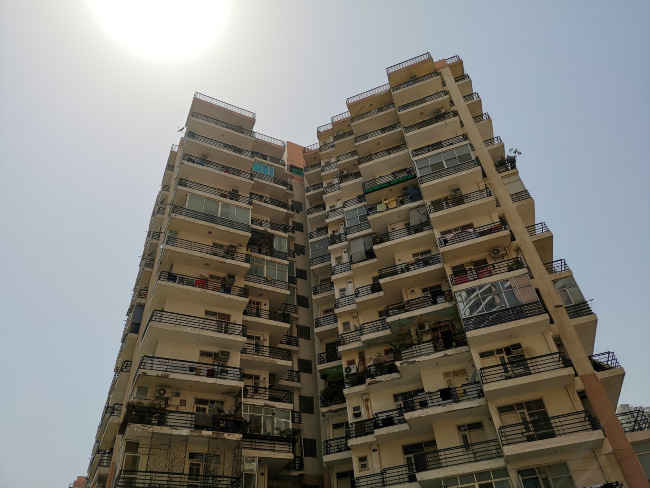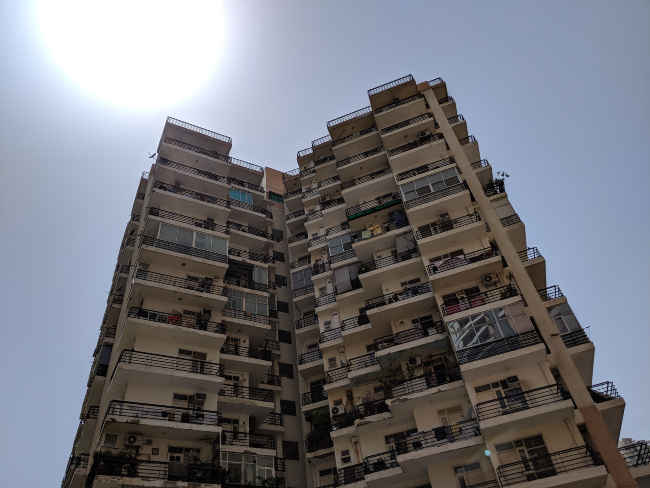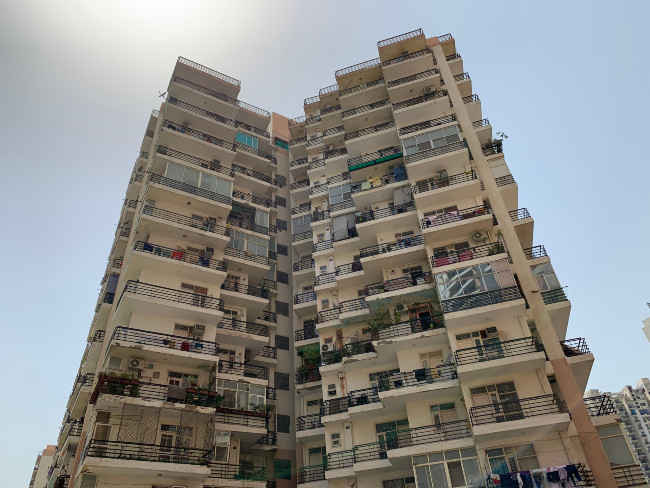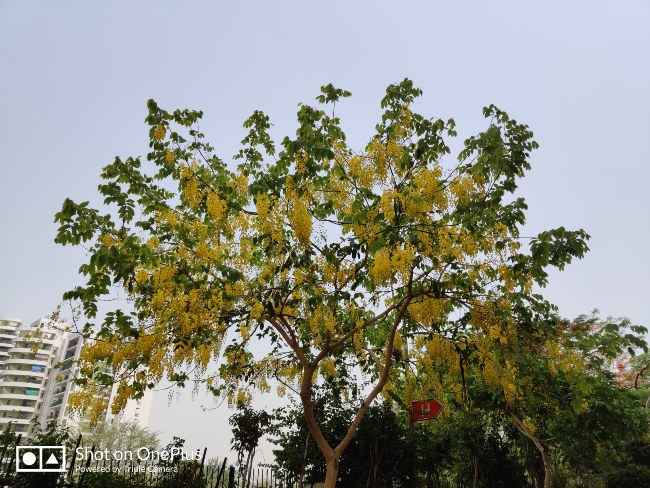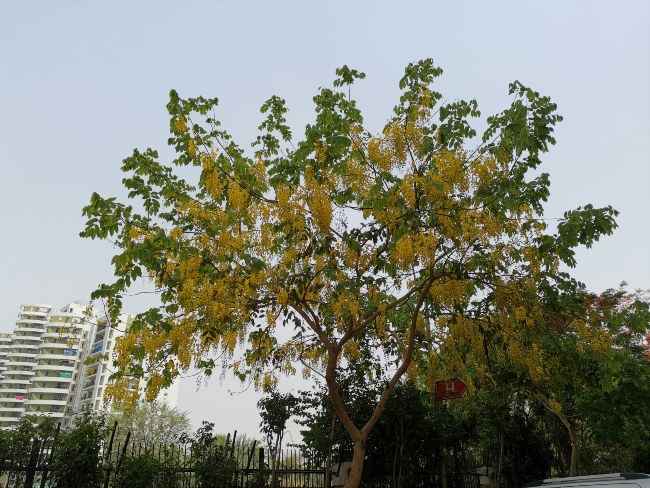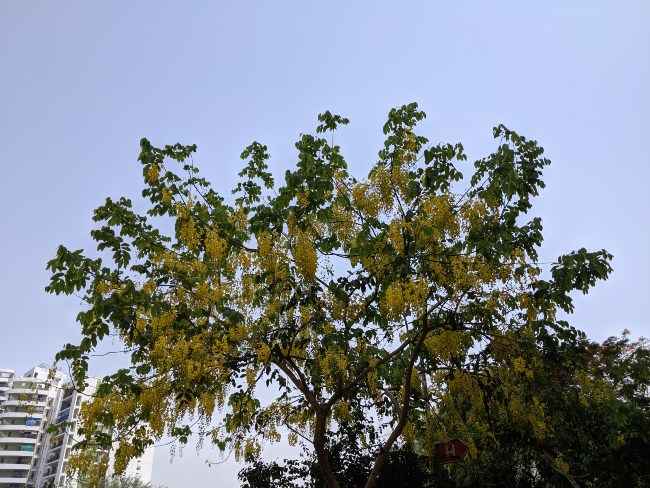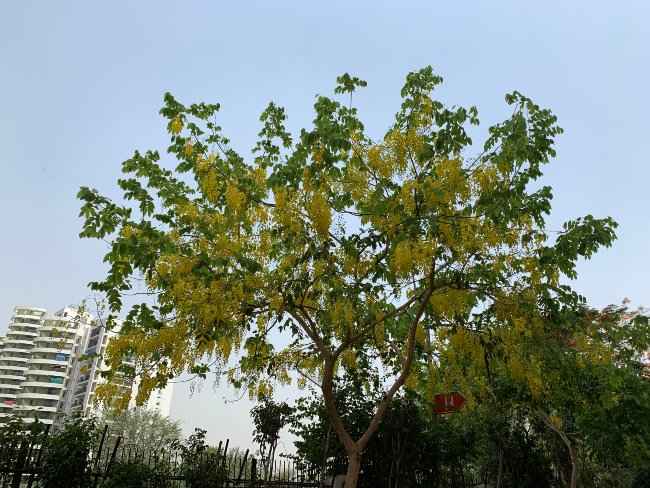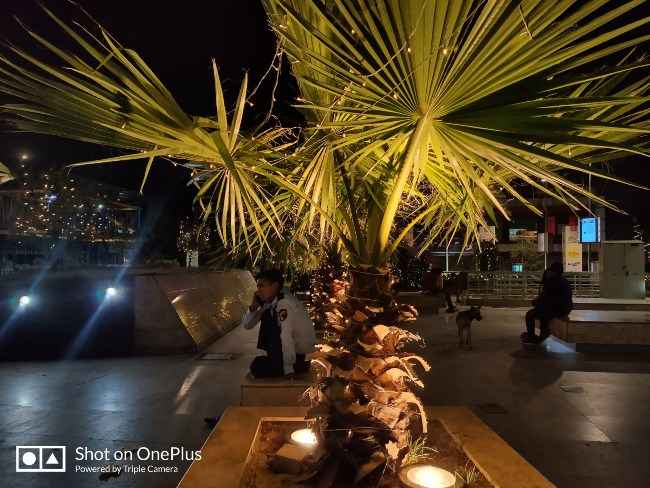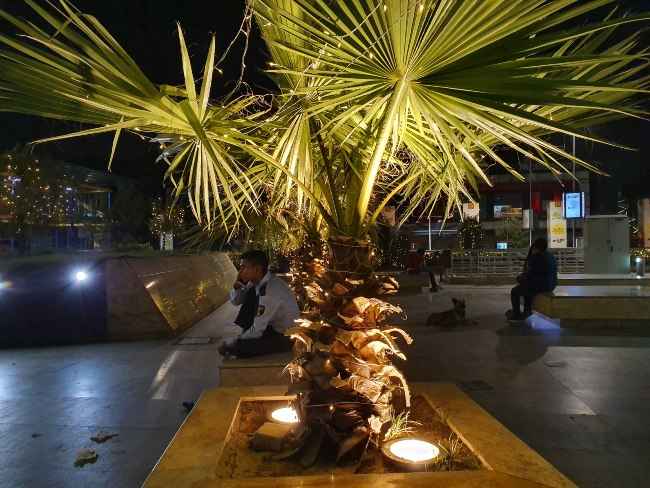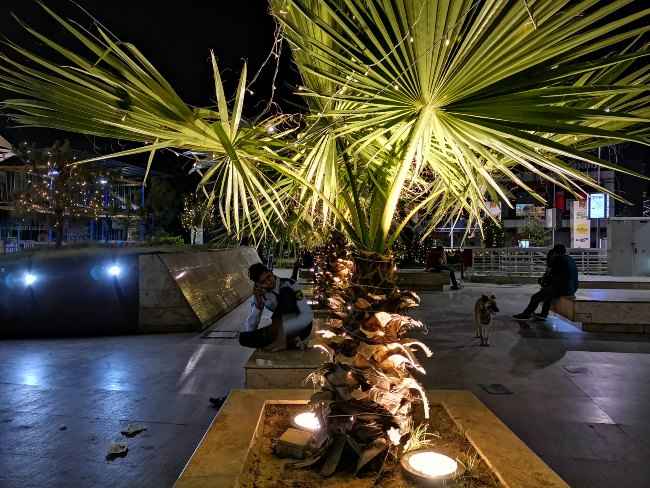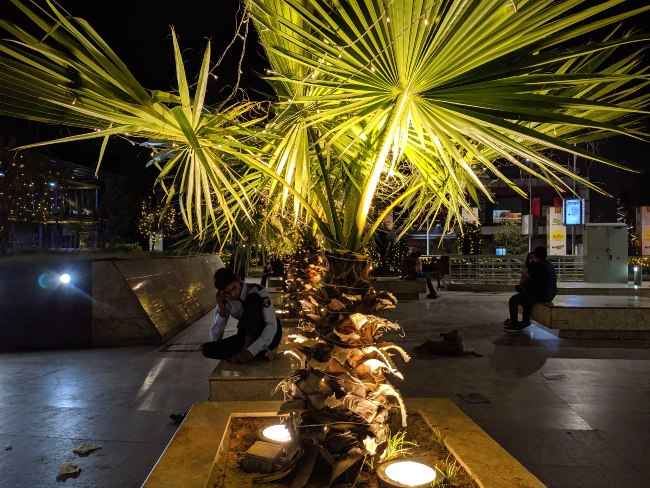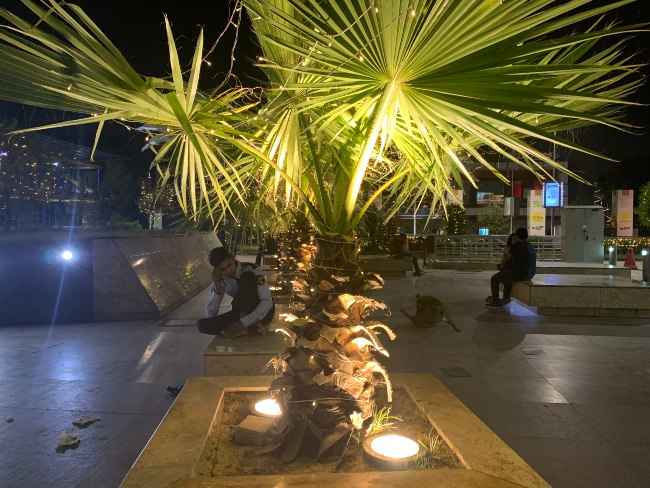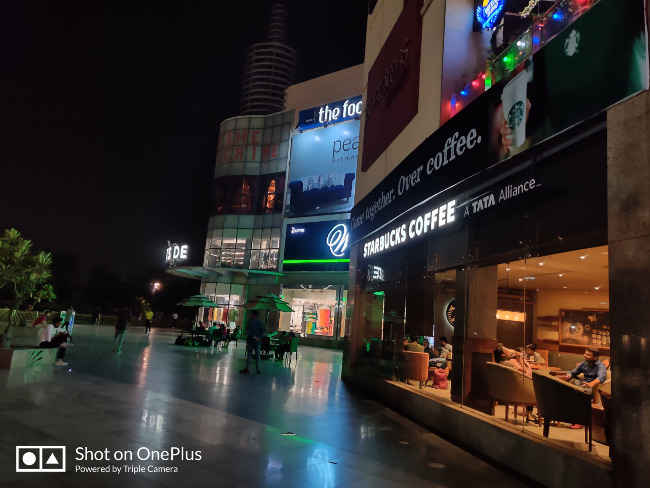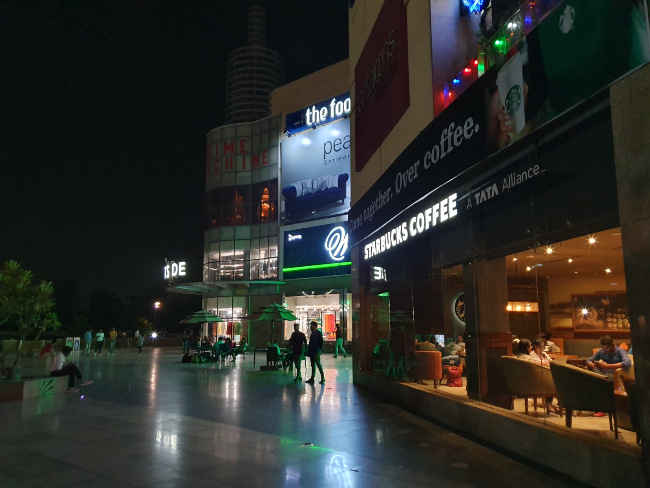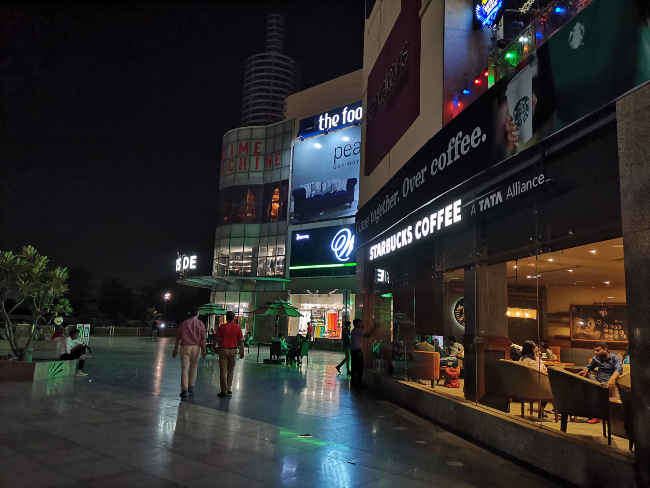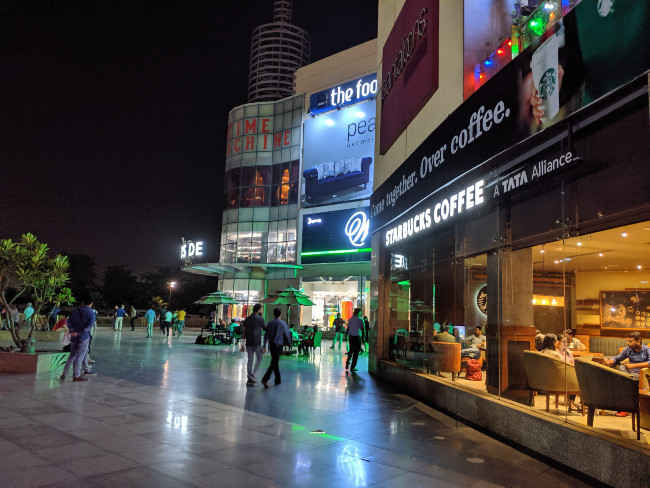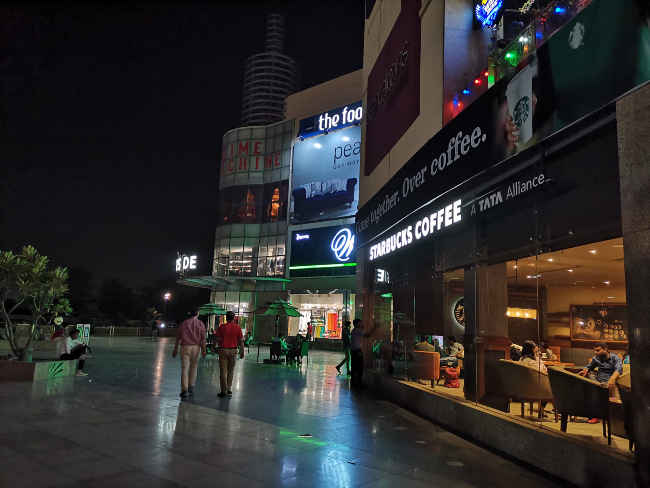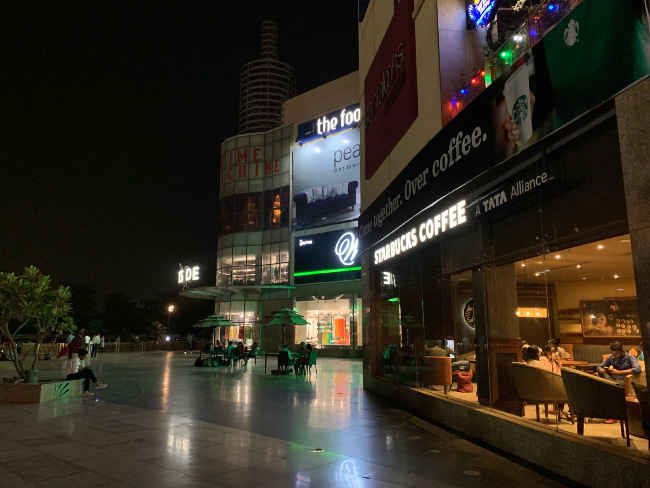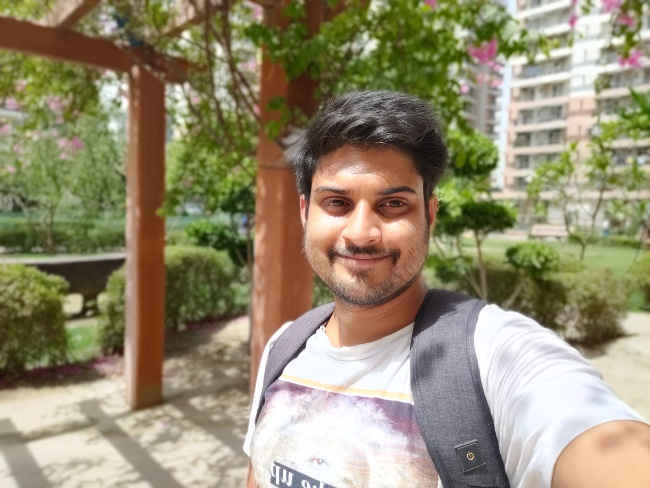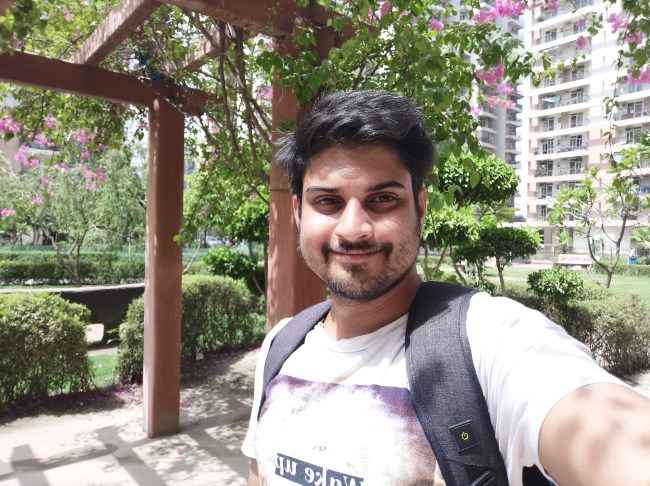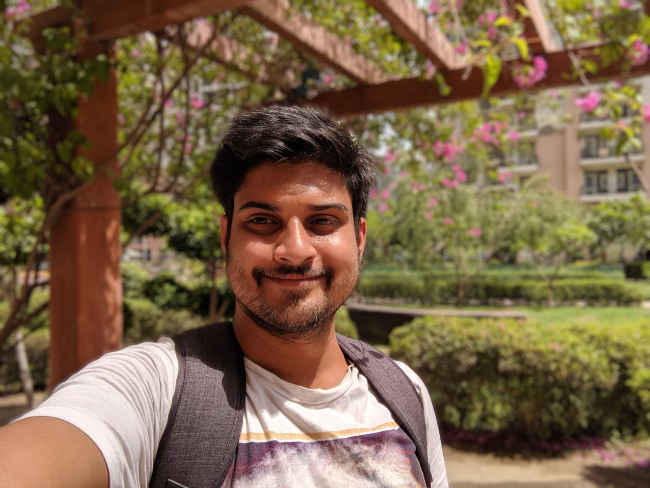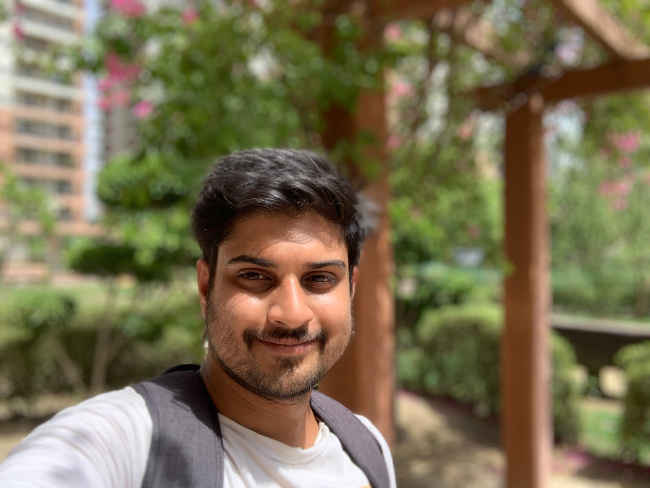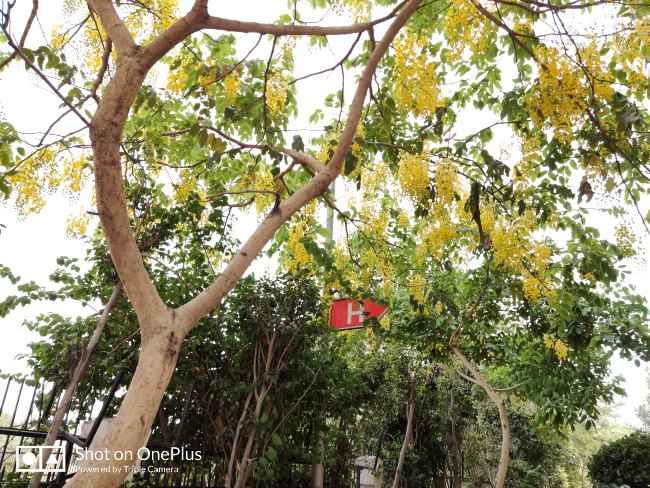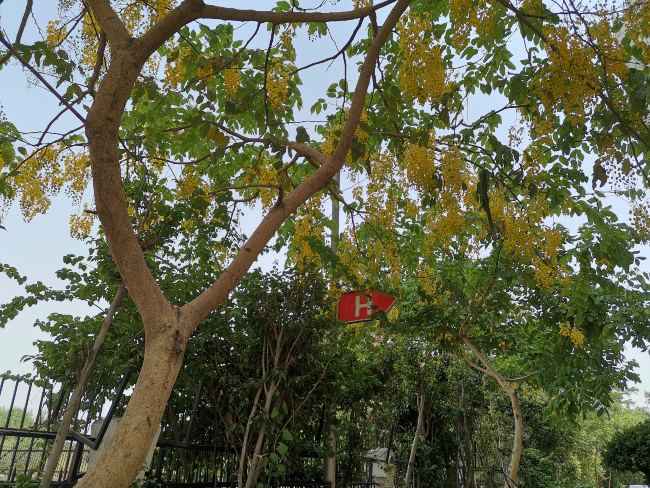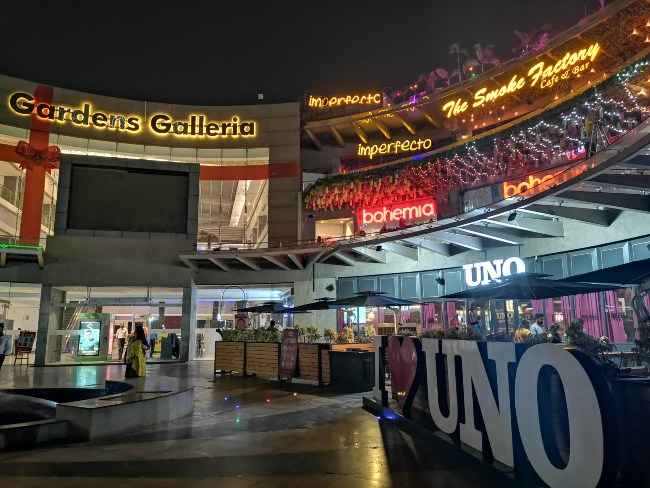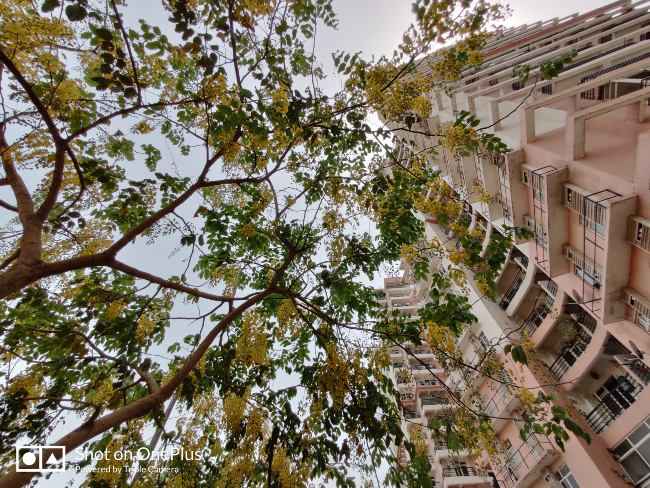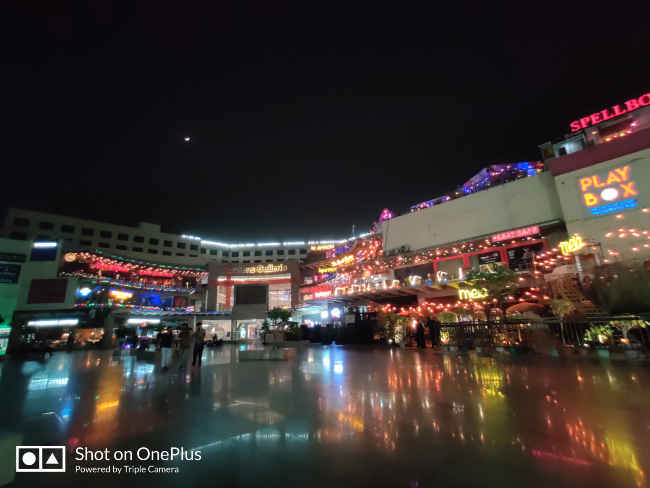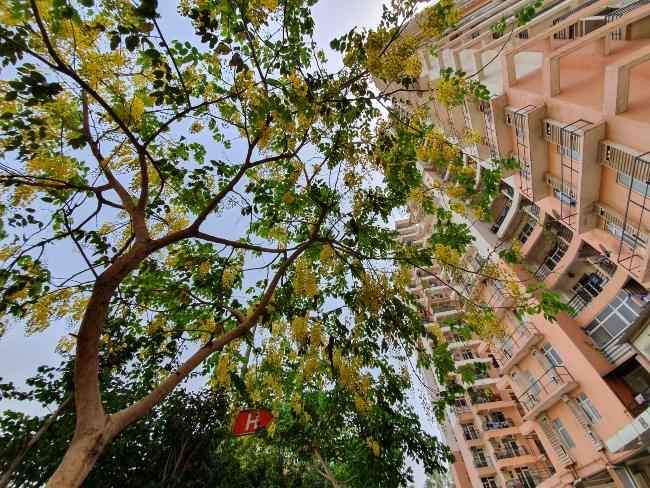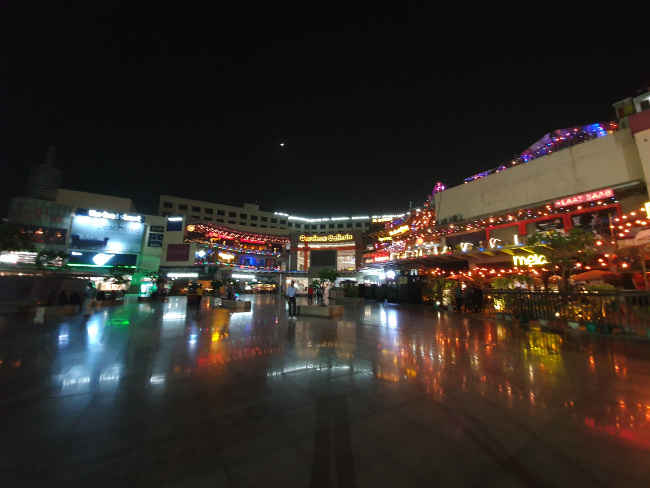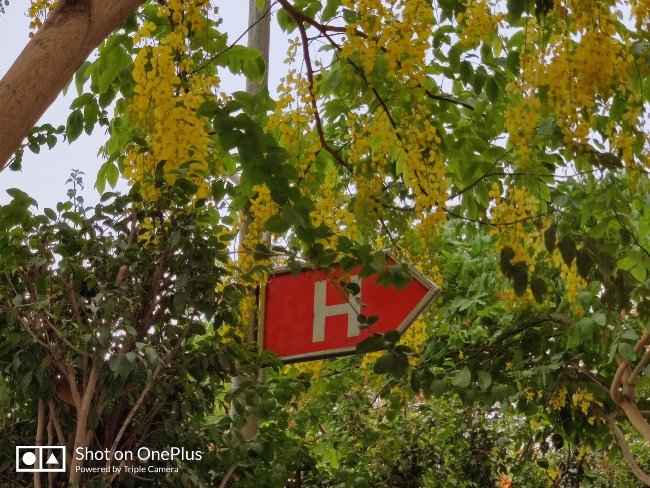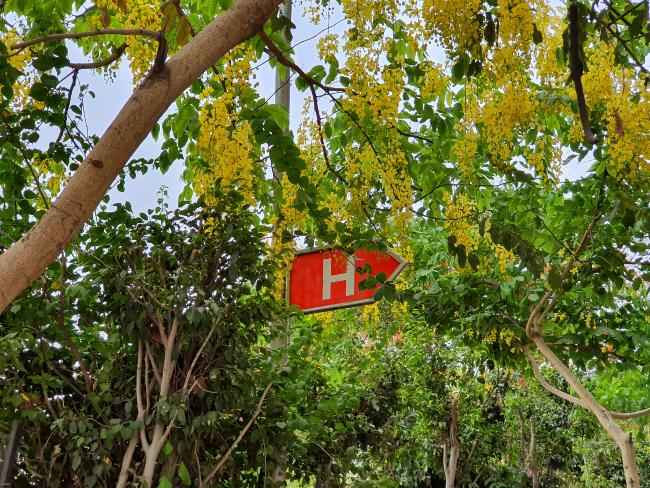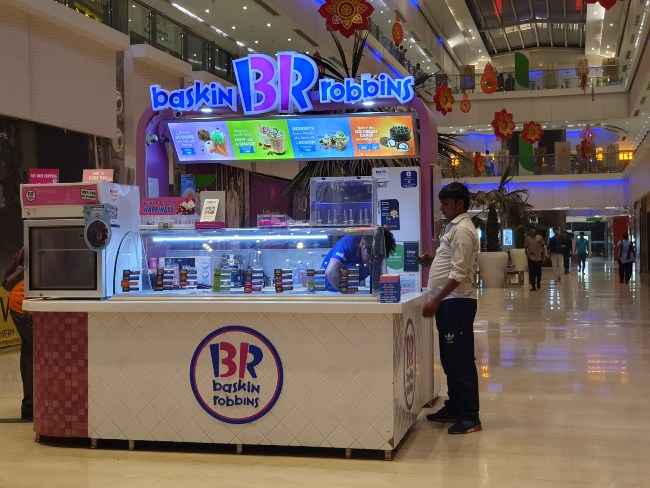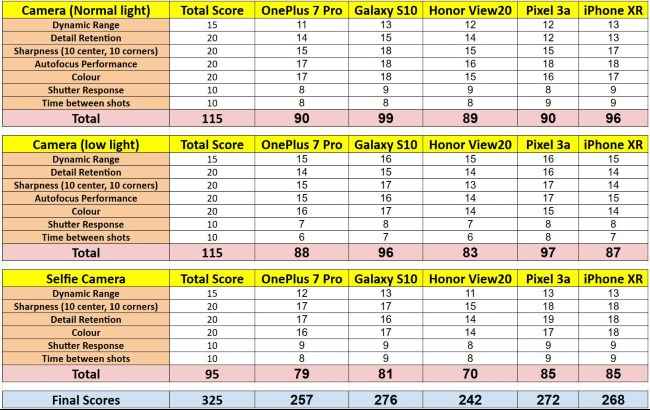OnePlus 7 Pro camera review and comparison
Comparing the OnePlus 7 Pro's triple camera to the current flagships
The OnePlus 7 Pro comes with three cameras on the back, with a 48MP sensor along with a ultra-wide camera and a telephoto lens.
The not-so-surprising performance of the OnePlus 7 Pro camera proves the company still has a long way to go to become the premium device it once dreamed of making obsolete.
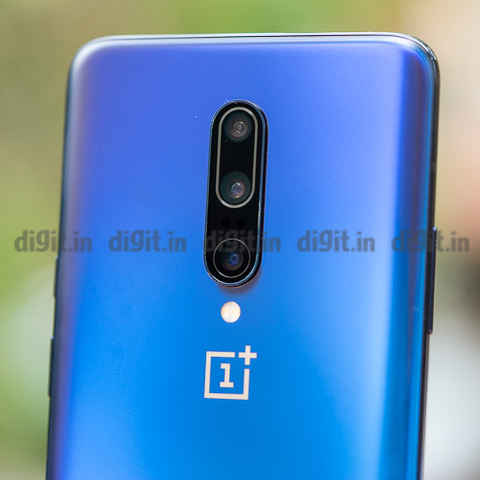
The camera on the OnePlus 7 Pro is certainly interesting. There’s a Sony IMX 586 48MP camera combined with a 8MP telephoto lens with 3X zoom and another 16MP ultrawide camera. From the dual camera stack on the OnePlus 6 and 6T where the secondary camera hardly did anything, there’s no dearth of shooting options in the company’s first premium flagship. But having options is good, using the options to shoot great photos is what we want from a Rs 50,000 flagship. There’s no doubt about the smartphone’s performance, but we’ve always been skeptical about the cameras OnePlus offers in its smartphones. Is the OnePlus 7 Pro the turning point? We compared the photos from the OnePlus 7 Pro against those taken by the Honor View20, Samsung Galaxy S10, Google Pixel 3a and the iPhone XR, all of which are priced close to the OnePlus 7 Pro. Read this if you’re looking for a good camera in the Rs 50,000 range —
 Survey
SurveyOnePlus 7 Pro vs Samsung Galaxy S10 vs Honor View20 vs Google Pixel 3a vs iPhone XR camera specs
Both the OnePlus 7 Pro and the Honor View20 house the 48MP Sony IMX586 sensor but the OnePlus 7 Pro also offers a telelphoto and a wide-angle lens. Incidentally, both the primary lens and the telephoto lens (which is capable of 3X zoom) are stabilised by OIS while the wide-angle lens has PDAF and is not fixed focus. The Galaxy S10 also has a similar setup with a 2X zoom telephoto lens, a 12MP primary camera with dual aperture and a fixed-focus wide-angle lens. The iPhone XR and the Google Pixel 3a rely on single-lens setups. The Pixel 3a camera is basically the same as the Pixel 3 with a 12.2MP sensor turbocharged with the company’s own HDR+ algorithm. The iPhone XR also brings a good enough 12MP camera with OIS and PDAF, but is limited without the ability to optically zoom, offer wide shots or taking portrait photos of objects. All these cameras are good enough on their own, but which is the best among the five? Let’s find out.
Note: While OnePlus claims the OnePlus 7Pro to have a 3x optical zoom, we have found out by studying the EXIF data that the telephoto lens has a field of view of 74mm (2.7x) instead of 81mm (3x).
For more on the OnePlus 7 Pro, check out Performance Review and Comparison of the phone. Read on for Camera Comparison.
Scoring criteria
To ‘measure’ camera performance, we used to ranking scheme we use in our reviews, where we factor in things like sharpness, dynamic range, colours in both day and lowlight conditions. We also apply the same metrics for the front camera. Daylight and lowlight performance is measured out of 115 points, while the selfie camera is measured out of 95 points. Apart from that, we looked at the quality of the wide-angle, telephoto and the night mode of the OnePlus 7 Pro.
DISCLAIMER: Images used in the article have been resized for the web. You can browse through the entire gallery of photos taken with the five phones in the Flickr gallery linked here. We also chose one image that represents each camera the best for every section. There are more samples in the Flickr Gallery.
Daylight
Sharpness
Shot on OnePlus 7 Pro
Shot on Galaxy S10
Shot on Honor View 20
Shot on Pixel 3a
Shot on iPhone XR
Sharpness is something most cameras tend to achieve these days, and these premium flagships are no different. There’s the apparent colour distortion in all the cameras (only the iPhone XR comes close to the original), but as far as the sharpness is concerned, the Galaxy S10 takes it away. The foliage looks lush, rich and lively. Even the iPhone XR manages to offer good sharpness. The View20 and the OnePlus 7 Pro couldn’t get the details right and parts of the frame look murky in both the photos. The Pixel 3a falls somewhere in between with good colours, but lacking details.
HDR
Shot on OnePlus 7 Pro
Shot on Galaxy S10
Shot on Honor View20
Shot on Google Pixel 3a
Shot on iPhone XR
Harsh sunlight is the strongest enemy of smartphone photography and most OEMs tackle it with HDR algorithms to bring out the colours and details of the object in focus. The sun in the sample looms large over the buildings and all phones had some discolouration. However, among them, the Galaxy S10 made the brightest photo with good colour representation followed by the iPhone XR which also managed to catch a cool rainbow glare off the sun.
Colour
Shot on OnePlus 7 Pro
Shot on Galaxy S10
Shot on Honor View20
Shot on Pixel 3a
Shot on iPhone XR
Summer is in full blast and the harsh afternoon sun makes life difficult for cameras. Despite that, all the phones here handled the scene pretty well. However, the Pixel 3a and iPhone XR bring out the shade of the sky the best, and the Galaxy S10 and the OnePlus 7 Pro has warmer tones and the Honor View20 washes out the sky quite a bit. As for the flowers in focus, the Galaxy S10 makes the punchiest colours followed by the OnePlus 7 Pro. The iPhone XR and the Honor View20 reproduced warmer tones and the Pixel 3a was the coolest of the lot, with a dark patch in the bottom right corner.
Scores
Lowlight
Details
Shot on OnePlus 7 Pro
Shot on Galaxy S10
Shot on Honor View20
Shot on Google Pixel 3a
Shot on iPhone XR
Lowlight photography have been the limitations of smartphone photography, but here again, OEMs have developed night mode algorithms that brings out a lot more details that what phones managed a few years back. In case of these five phones, the Pixel 3a gets the details almost perfectly right. The sharp edges of the leaves are the sharpest in the Pixel 3a. The OnePlus 7 Pro also gets most of the details, even without its night mode on. However, the OnePlus 7 Pro and the Honor View20’s photos are darker than the rest. The iPhone XR clipped brightness around the bulbs while the Galaxy S10’s photo was visibly warmer.
HDR
Shot on OnePlus 7 Pro
Shot on Galaxy S10
Shot on Honor View20
Shot on Google Pixel 3a
Shot on Honor View20
Shot on iPhone XR
Larger sensors ensure dynamic range and after binning four pixels into one, the achieved light capture is much higher in the OnePlus 7 Pro and the Honor View20. But the Pixel 3a relies on software to get a more balanced output. The Galaxy S10 also manages to get more exposure while the iPhone XR has punchier contrasts.
Colours
Shot on OnePlus 7 Pro
Shot on Galaxy S10
Shot on Honor View20
Shot on Google Pixel 3a
Shot on iPhone XR
The OnePlus 7 Pro and the Galaxy S10 make the brightest photos indoors out of the five. The Galaxy S10’s colours are warmer while the Honor View20’s colours are the coolest. The OnePlus 7 Pro gets the colour just right and so does the iPhone XR and the Pixel 3a, but both of are poorly exposed.
Scores
Front camera
Shot on OnePlus 7 Pro
Shot on Galaxy S10
Shot on Honor View 20
Shot on Pixel 3a
Shot on iPhone XR
Selfies are essential, so much so that we are seeing 1/2-inch camera sensors with 48MP resolution on the front. Well, none of these phones have that, but that doesn’t self portraits come out any worse. In fact, the Pixel 3a does an excellent job in preserving minute facial details, even the sweat beads. The iPhone XR and the OnePlus 7 Pro also stay true to source while the Galaxy S10 and the Honor View apply significant amount of smoothening by default on the skin.
The iPhone XR offers the best bokeh out of the five. The Galaxy S10 also stands out but the bokeh is quite abrupt and my face looks like a cutout in the frame. The OnePlus 7 Pro and the Honor View20’s bokehs are less prominent. In fact, my face looks a lot paler on the Honor View20.
Scores
48MP resolution comparison
Shot on OnePlus 7 Pro (48MP)
100 percent crop
Shot on Honor View20 (48MP)
100 percent crop
Both the Honor View20 and the OnePlus 7 Pro tout 48MP sensor as the primary cameras. Both also shoot at 12MP resolution by default after binning four pixels into one. In the sample above, the Honor View20’s 48MP shot has better details at 100 percent crop. The OnePlus 7 Pro couldn’t handle the exposure right and there’s a lot less details on the log in 100 percent crop. While both phones botch up the 48MP mode by taking away sharpness, details and dynamic range that you otherwise get in the default 12MP, the Honor View20 does a much better job at producing high-resolution photos.
Night Mode comparison
Shot on OnePlus 7 Pro
Shot on Pixel 3a
Shot on Honor View20
A dedicated Night mode exists in three phones out of the five we tested. The iPhone XR does not have a Night mode while the Galaxy S10 automatically engages a night mode when the scene is feasible. The other three did a pretty good job at composing a good low-light photos with all the colours and details. The Google Pixel 3a with its Nightsight mode did the best job out of the three. The colours are sharp and there’s little noise in the frame. The OnePlus 7 Pro also did a pretty good job but there’s a little ghosting around the backlit text on top. The Honor View20 is visibly darker than the two and the details are hazier as compared to the OnePlus 7 Pro.
Ultra-wide camera comparison
Shot on OnePlus 7 Pro
Shot on OnePlus 7 Pro
Shot on Galaxy S10
Shot on Galaxy S10
Both the Galaxy S10 and the OnePlus 7 Pro are new to the ultra-wide game, but Samsung seems to be way ahead. Daylight wide-angle shots look good in both the Galaxy S10 and the OnePlus 7 Pro, but the Galaxy S10 manages to produce a punchier image with prominent blue and yellow against the pink colour of the building. The OnePlus 7 Pro washes out the sky a bit and the rest of the colours are a little faded. In low-light, neither of the two do any good. But if we have to choose, the Galaxy S10 is our pick. There’s lesser distortion for one, and the field of view is also higher. Also, we couldn’t seem to use the wide-angle lens in the Pro mode, a major setback in our opinion.
Telephoto lens (zoom) comparison
Shot on OnePlus 7 Pro
Shot on OnePlus 7 Pro
Shot on Galaxy S10
Shot on Galaxy S10
Both the Galaxy S10 and the OnePlus 7 Pro rock triple-lens stack, which include a telephoto lens. OnePlus 7 claims the 7mm telephoto lens offers 3X optical zoom, and it certainly gets more closer than what the 2X zoom lens of the Galaxy S10 achieves with its 6mm telephoto lens. But the Galaxy S10’s telephoto’s lens is far sharper in both daylight and lowlight. The zoomed-in photos of the OnePlus 7 Pro looks dull as compared to the S10’s. Having said that, the Galaxy S10’s applies significant postprocessing, sharpening the photos to a higher degree.
Final Scoresheet
Tallying the scores, the Samsung Galaxy S10 is the winner of this comparison with 276 out of 325 points. The Galaxy S10’s triple-camera offers stellar details, excellent dynamic range and quick auto-focus. The Google Pixel 3a, with the same camera as the Pixel 3, comes a close second with 272 points. The iPhone XR which also brings in some of the camera tuning of the iPhone XS comes third with 268 points. The OnePlus 7 Pro misses the third position by three points with 257 points and the Honor View20 finishes 5th with 242 points.
Closing thoughts
The camera comparison was primarily considered after the OnePlus 7 Pro breached the premium-flagship price-mark to take on the so-called ‘budget flagships’ from Google, Apple and Samsung. The Honor View20 anticipated this wave of entry-premium devices and was the first to come to market with a 48MP camera that was one of its kind when it launched in February. But over time, with the iPhone XR getting cheaper, Galaxy S10E debuting in that segment and the mid-range Pixel with a flagship camera made things far more interesting. OnePlus, after dominating the premium segment in India for almost the whole of last year, is geared to climb up the price-ladder.
However, the not-so-surprising performance of the OnePlus 7 Pro camera proves the company still has a long way to go to become the premium device it once dreamed of making obsolete. The Galaxy S10E, with the same camera as the Galaxy S10 (sans the telephoto lens), and the Google Pixel 3a will life difficult for the OnePlus 7 Pro, at as far as the camera performance is concerned. In our performance comparison with some of the best Android phones, the OnePlus 7 Pro proved its mettle and came out on top. The camera performance has certainly improved over the OnePlus 6T. Wide-angle and telephoto lenses offer more choice than the defunct second camera of its predecessor. But there’s still a marked difference in quality offered by the truly premium brands in the smartphone space.
